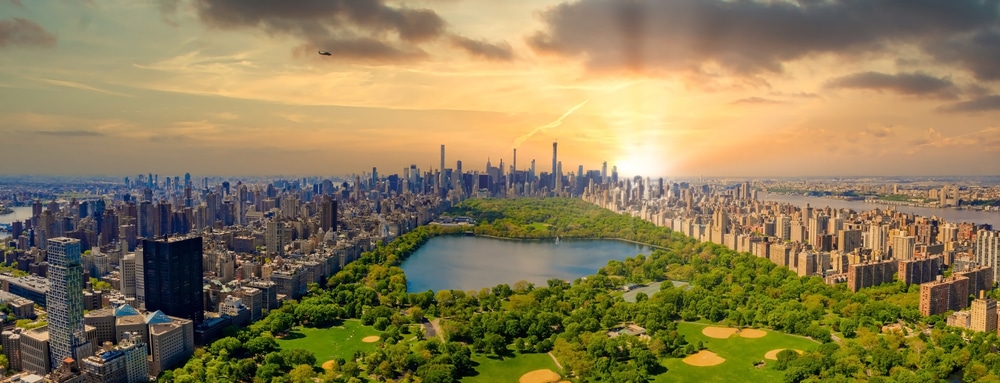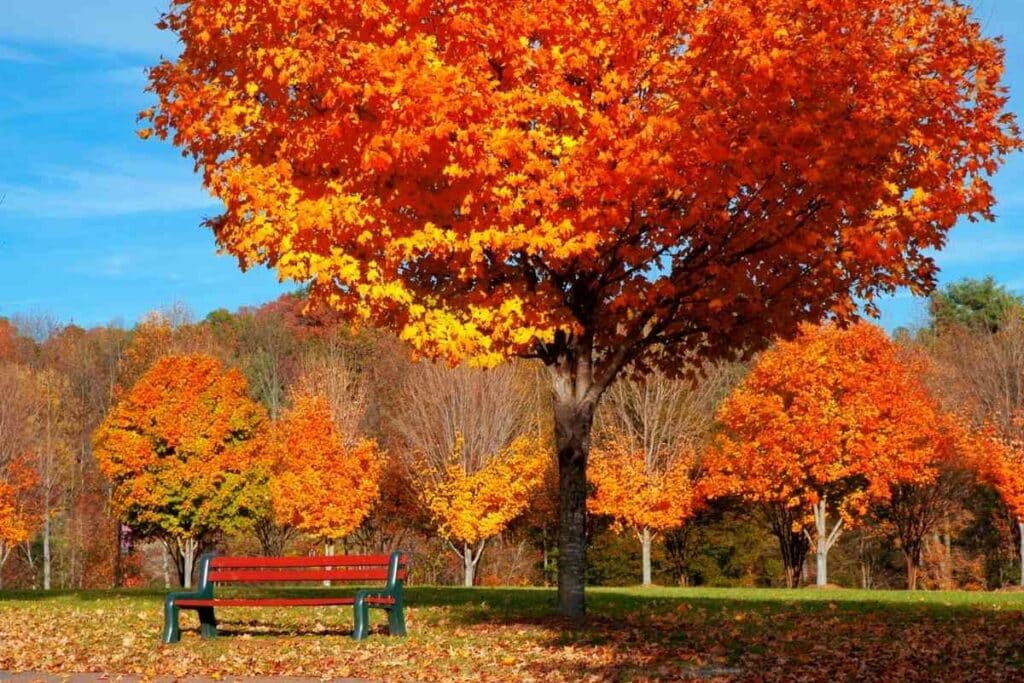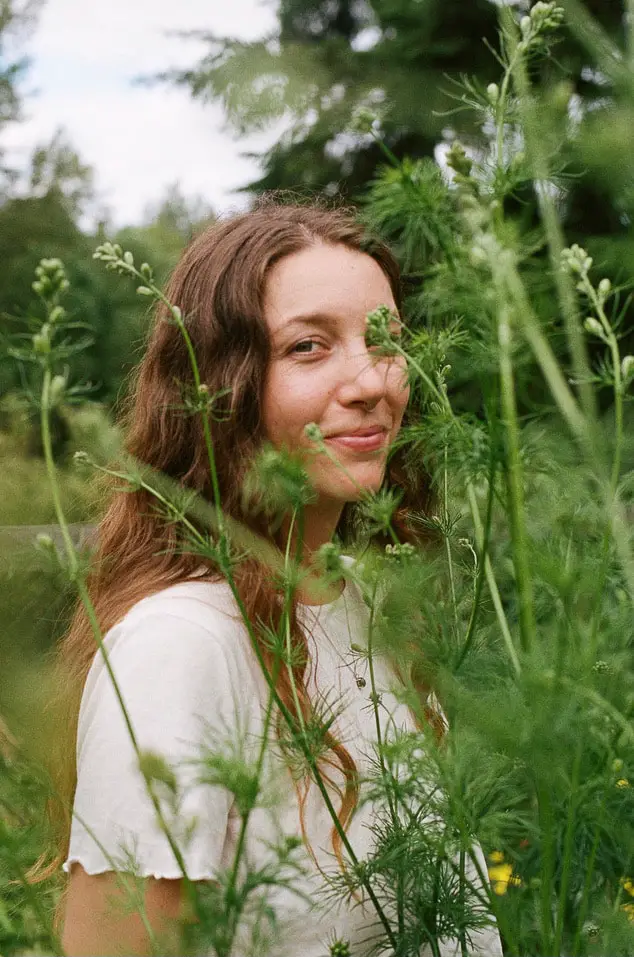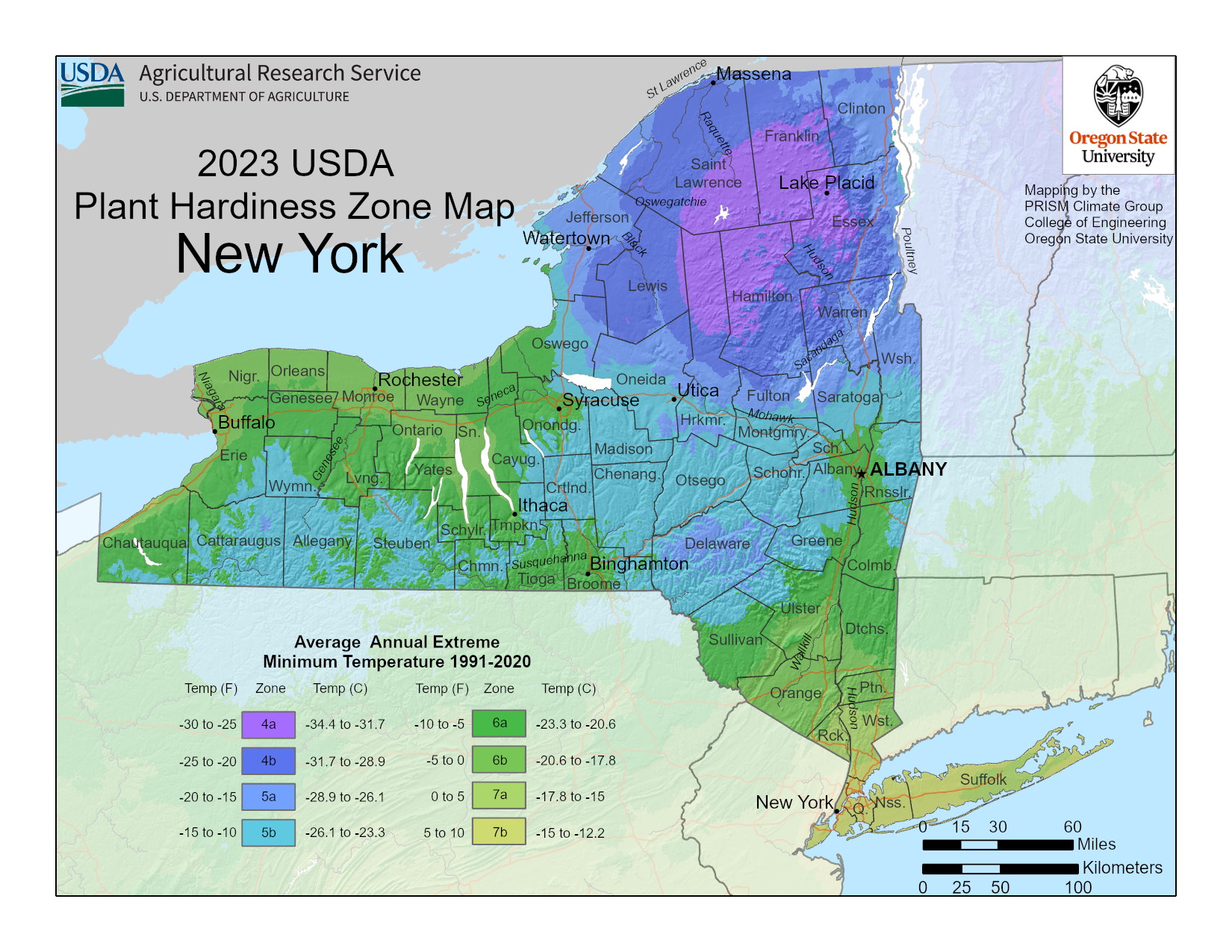New York Plant Hardiness Zones
| USDA Hardiness Zone | Average Minimum Extreme Winter Temperature Range Fahrenheit (°F) Celsius (°C) | Average First Frost Date Range In Autumn (End Of The Growing Season) | |
|---|---|---|---|
| 4a | -30°F to -25°F -34.4°C to -31.7°C | Mid to late May | Mid to late September |
| 4b | -25°F to -20°F-31.7°C to -28.9°C | Mid to late May | Mid to late September |
| 5a | -20°F to -15°F-28.9°C to -26.1°C | Early to mid-May | Late September to early October |
| 5b | -15°F to -10°F -26.1°C to – 23.3°C | Early to mid-May | Late September to early October |
| 6a | -10°F to -5°F -23.3°C to 20.6°C | Late April to early May | Early to mid-October |
| 6b | -5°F to 0°F -20.6°C to 17.8°C | Late April to early May | Early to mid-October |
| 7a | 0°F to 5°F -17.8°C to -15°C | Late April to early May | Mid to late October |
| 7b | 5°F to 10°F -15°C to -12.2°C | Early April to mid-April | Late October to early November |
New York Growing Conditions

Credit to Wikipedia
General Climate
New York has a significant range of hardiness zones, from 4a right up to 7b. Most of the state experiences four distinct seasons.
New York is mostly a humid continental state, but the farthest southeast portion is humid subtropical. These subtropical areas have humid, hot summers. The winters there are shorter and more temperate with temperatures staying above freezing.
Annual precipitation is consistent throughout the year in New York. The Great Lakes region experiences more precipitation than the rest of the state. This is caused by “lake effect”. Lake effect happens when an area of land is close to a large body of water. The cold air moving over the warm water creates precipitation that comes in the form of both rain and snow.
Microclimates
USDA plant hardiness zones are an important starting point for your garden, but you’ll also need to consider microclimates.
Microclimates are areas where specific conditions create a climate different from the climate they’re situated in.
Buildings, fences, paved areas, or short hills and valleys can create these microclimates.
They can be as small as a space in your backyard or as large as a city.
In other words, learn about your local conditions from local experts to see if your garden falls into a microclimate.
Extreme Weather
Severe Storms
New York experiences a range of severe weather. These patterns include thunderstorms, Nor’easters, heavy rains, and even tornados.
New York feels the effects of approximately 10 tornadoes per year. Winds, rain, and hail are common. Not all storms are extreme, but violent and strong winded tornadoes blow through New York approximately once every five years.
Being prepared is the best way to mitigate these storms.
Plan
Have a garden plan that is suitable for your area. Recommended gardens are:
- Rain gardens
- Drought-tolerant gardens
- Container gardens
Soil
Focus on soil health. This builds strong roots and healthy plants that are better suited for handling extreme weather.
Use Native Plants
Native plants are more adaptable and resilient to regional weather and climate. They build strong ecosystems. They are also less maintenance than gardens with many non-native species.
Heat Waves
Heat Waves are common to New York in the summer months.
They occur throughout the state, but are most hazardous in areas of dense urbanization. Large swaths of concrete and little to no greenspace, act as heat sinks which cause drastic increases in temperatures.
Heatwaves in New York occur approximately 2 times a summer and can last up to 5 days. They are dangerous to humans and wildlife alike.
With climate change on the rise, heat waves are likely to increase in temperatures and in duration.
See below for tips on dealing with heat waves in New York.
Growing Season
The growing season in New York ranges significantly.
The number of frost-free days is between approximately 135 to 161 days. Last frost ranges from mid-April to mid-May and first frost ranges from mid-September to mid-November.
The Adirondacks region experiences the shortest amount of growing days. The hardiness zones here range from 3 to 4.
New York City and Long Island areas encompass hardiness zones 6 to 8 and have the longest growing season. This is because of their proximity to the Atlantic Ocean. The ocean regulates temperature because large bodies of water take longer to warm up and cool down. The air flow moves over the warmer or cooler water and across the land. It keeps the weather more moderate with cooler summers and milder winters.
Understanding your hardiness zones and following planting guides helps you make the most of your growing season. It also helps you better understand what plants grow best in your region.
New York Gardening Tips

Combating Heat Sinks
Heat sinks are large, spread out areas of concrete, such as urban areas. The concrete absorbs and retains heat for long periods of time. This increases temperatures significantly. Some ways to help keep cities cooler is to plant a garden!
Trees and Greenspaces
Planting trees and creating gardens mitigates heat sinks. They do so by adding shade, improving air quality, and releasing moisture into the atmosphere. They also absorb and displace heat.
Green Roofs
In dense urban areas, planting green roofs is an ideal solution to reduce heat in the city. This is because rooftops cover large areas and face direct sunlight. Planting a succulent garden or wildflower meadow is an easy way to create a green roof. This is because they have shallow root systems, can handle the intense heat and attract pollinators too!
Container Gardens
Even if you don’t have lots of space, container gardening on a small balcony is a great way to combat the effects of urban heat sinks. Planting in pots also comes in handy for easy movement to cover during intense heat days. Some great plants that are easy to grow in a container are:
- Tomatoes
- Potatoes
- Peppers
- Beans
- Strawberries
Plant Keystone Species
Keystone species are native plants that support beneficial pollinators, like butterflies, moths, bees, birds, and bats!
Keystone native plants require less maintenance, are drought tolerant, and can handle extreme weather. This makes them perfect for large areas of urbanization with not a lot of greenspace.
By planting keystone species you are helping beneficial pollinators thrive by creating food sources and resting sites in urban areas. This creates a positive impact and builds resilient ecosystems that these pollinators so desperately need!
Some examples of keystone species in New York state include:
- Blue Wood Aster
- Purple Coneflower
- Goldenrod
Add keystone species to your veggie container garden. You can companion plant veggies with these powerful pollinator plants. This helps draw beneficial pollinators in to pollinate your food. Thus creating higher yield and better food production.
Consult With Local Professionals
Consulting with local gardening professionals allows you to benefit from their experience with your area’s conditions, the plants that do well there, and overall best practices.
New York Plant Suggestions

Trees
- Sugar Maple (Acer saccharum)
- Eastern White Pine (Pinus strobus)
- Balsam Fir (Abies balsamea)
Shrubs
- Serviceberry (Amelanchier)
- Easter Baccharis (Baccharis halimifolia)
- Dwarf Birch (Betula nana)
Flowers
- Black Cohosh (Actaea racemosa)
- Bog Orchid (Arethusa bulbosa)
- Prickly Poppy (Argemone albiflora)
Vegetables
- Patio Tomato (Solanum lycopersicum ‘Patio’)
- Slender Amaranth (Amaranthus viridis)
- Jerusalem Artichokes (Helianthus tuberosus)
Herbs
- Blue Giant Hyssop (Agastache foeniculum)
- Prairie Sage Bush (Artemisia frigida)
- White Sage (Artemisia ludoviciana)
Spices
- Spicebush (Lindera benzoin)
- Onion Grass (Allium schoenoprasum)
- Bearberry (Uva ursi)
Fruits
- Red Chokeberry (Aronia arbutifolia)
- Paw Paw (Asimina triloba)
- Northern Wild Strawberry (Fragaria virginiana ssp. glauca)
Succulents
- Easter Prickly Pear (Opuntia cespitosa)
- Eastern Prickly Pear (Opuntia humifusa)
- Stonecrop (Sedum)
Disclaimer
Any of the above can change and is not exhaustive.
Treat anything above like a good starter guide. Then use that as a foundation as you consult with local gardeners, professionals, forecasts, guides, and organizations.

